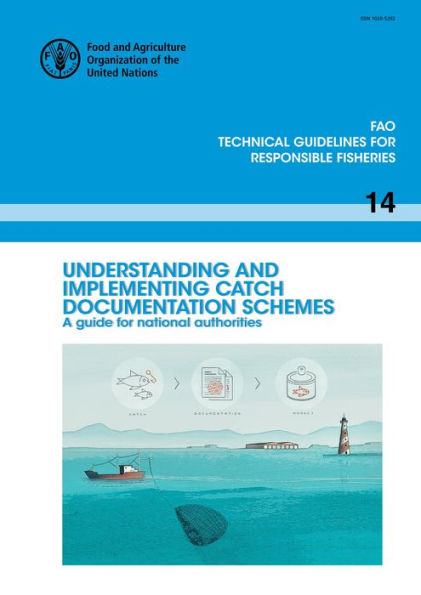Catch documentation schemes (CDS) are just one in an array of tools designed to combat illegal, unreported and unregulated (IUU) fishing. The schemes provide a means for countries to cooperate in providing information about the legality of fish as it moves through the supply chain, from catch to market. Many countries are familiar with the specific information requirements on CDS forms; some, however, are less aware of the need for robust national systems to validate and verify that information. This document seeks to align and improve existing national monitoring, control and surveillance (MCS) tools, as well as product tracking systems, in order to support more effective national CDS implementation and strengthen CDS throughout the international supply chain.
The document contains chapters on the legal and policy background to CDS, an introduction to the features and requirements of existing schemes, as well as guidance on how to handle CDS information requirements and identify national key data elements. Finally, it provides a series of exercises for assessing relevant national capabilities and coordination processes, including the management and exchange of information.
Catch documentation schemes (CDS) are just one in an array of tools designed to combat illegal, unreported and unregulated (IUU) fishing. The schemes provide a means for countries to cooperate in providing information about the legality of fish as it moves through the supply chain, from catch to market. Many countries are familiar with the specific information requirements on CDS forms; some, however, are less aware of the need for robust national systems to validate and verify that information. This document seeks to align and improve existing national monitoring, control and surveillance (MCS) tools, as well as product tracking systems, in order to support more effective national CDS implementation and strengthen CDS throughout the international supply chain.
The document contains chapters on the legal and policy background to CDS, an introduction to the features and requirements of existing schemes, as well as guidance on how to handle CDS information requirements and identify national key data elements. Finally, it provides a series of exercises for assessing relevant national capabilities and coordination processes, including the management and exchange of information.

Understanding and Implementing Catch Documentation Schemes: A Guide for National Authorities

Understanding and Implementing Catch Documentation Schemes: A Guide for National Authorities

Product Details
| BN ID: | 2940165811593 |
|---|---|
| Publisher: | Food and Agriculture Organization of the United Nations |
| Publication date: | 03/12/2022 |
| Sold by: | Smashwords |
| Format: | eBook |
| File size: | 5 MB |
